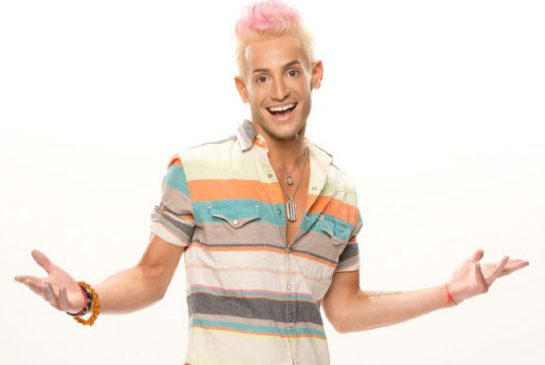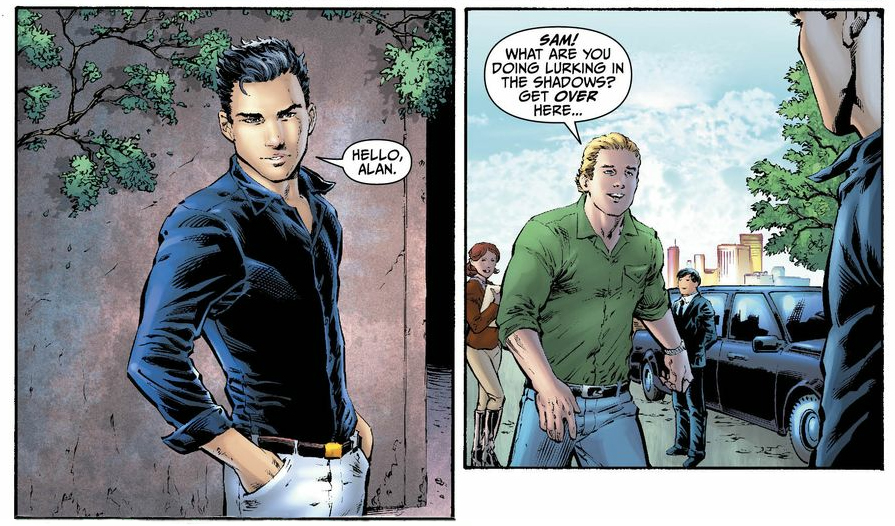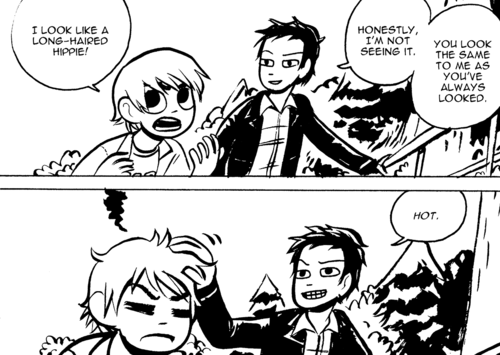At Salt Lake Comic Con last week, I had the chance to sit on the “LGBTQ in Geekdom” panel and had a wonderful time. It was mainly a Q&A between the panelists and the audience, and to say that it was well received would be an understatement as it was a nearly full room. Seeing so many LGBT geeks and allies in the same room was really encouraging, especially in this reddest of states with a marriage amendment lawsuit currently waiting to see if it will hit the Supreme Court’s docket.
One of the first questions I answered had to do with how LGBT people are portrayed in comics, and my response drew the ire of one young woman in the front row. She took issue with the fact that I didn’t believe that comics (or any medium) need to meet a quota of LGBT characters. Instead, I said that their introduction or coming out should feel natural and not be forced just to have a “token gay” in the comic. Characters shouldn’t be turned gay just because people feel there needs to be greater representation. She adamantly disagreed, saying that there should be a 50/50 mix between straight and other sexually oriented characters, and how dare I suggest that people “turn” gay. I only had a brief time to respond to that question, but her statement has stuck with me and is something that should be addressed.
One of the biggest arguments against splitting characters equally is the simple fact that it doesn’t accurately reflect society. Depending on the study, the percentage of LGBT people ranges somewhere between three and ten percent. Gauging the sexuality of a population is difficult as it mainly relies on people’s volunteering the information about themselves. Since there are still a lot of people who aren’t out or don’t identify as gay or lesbian even if they have engaged in same-sex relations (this one time, at band camp), the result will hardly ever be accurate. If people want to be up in arms about how cultures are reflected in comics, they would do better to look at racial minority groups, as many of them are under represented in the medium. One could also easily look at how women are still depicted as sexual objects and not as the powerful people they are (Spider-Woman variant, anyone?).
There’s also the fact that requiring artists and creators to include an exact percentage of LGBT character runs the risk of their just becoming a token character who is only there because they have to be, and not because they have anything useful or interesting to do. It becomes an argument of quality over quantity. Many writers work on multiple titles at a time and have a lot of work to do every month, so to cram more restrictions and rules on what they can and can’t do will end up with a lower quality product that no one will be happy with.

Hi, I’m the Token Gay, where do you need me?
As is always the case, if that happens, then the same fans who demanded the additions will be the first to bitch and complain about how fake and unrealistic the newly added characters are
Wouldn’t it be better to have a writer take a character, even an original one, and cast and mold them into something unique and interesting that actually gets people emotionally involved? Hulkling and Wiccan are perfect examples of gay characters done right, as is Northstar (his being shoved back in the closet in the 90s notwithstanding) because their sexual identities were baked into their character and not tacked on later.
Which leads me to the whole “turning people gay” thing.
Look, I’m in no way suggesting that people “turn” gay, lesbian, bi, trans, whatever. I can attest to the fact that when puberty hits and your sexual side turns on, you have absolutely no choice in what gender you’re attracted to. Aside from extreme right-wing nuts, almost no one subscribes to that lunacy anymore.
Which is why it’s almost insulting when creators arbitrarily do something like that and make a big deal about it a la DC and Alan Scott. DC decided to make a big deal about the fact that the original Green Lantern was going to come out as gay, and it just felt like pandering. I have absolutely no issue with the fact that the character was reimagined as gay, but the way that DC was just flouting it about and trying to make it some BIG deal made it incredibly stupid. “OOOOH, a classic DC character is coming out, guess who?” they taunted us. Well it sure as hell wasn’t going to be Superman, Batman or any of the ones that actually mattered because that might have hurt sales. Let’s take someone almost everyone had forgotten about, change his sexuality, and then sit back and act all smug like we had done something worthwhile. No you didn’t, DC, you just made yourselves look like asses.

Thanks, DC, for making your gay characters come across as creepy
Sure, a straight character could come out, and if handled appropriately, that’s completely fine, but wouldn’t it be more fun and a lot more interesting to introduce a new LGBT character, let them take the reigns of a big-name hero(ine) like Cap, Thor or Wonder Woman, and then when the original takes their mantle back (as they always do), spin off that new person into a comic of their own and let them grow from there? If they were written the right way, then people are going to like them and want to see what they do next. As a bonus, it all happened naturally and organically — the way it should have.
Look, I agree with that young woman from Comic Con; I do want to see more LGBT representation in comics, but it needs to be done the right way. Forcing people to change or look at things differently rarely has a positive outcome, and it would definitely be the wrong thing to do in this situation. Ask anyone you know who used to be against LGBT rights and now supports them why they changed their minds, and they will almost unequivocally say that it was because a loved one came out to them. Faced with the reality that someone who is near and dear to them is struggling or being hurt based on their views of their innate sexuality is what made them change. Not telling them they were wrong, calling them a bigot or shunning them. No, it was through love.
The same will work in all of our forms of entertainment. Give people characters they love and identify with, even if they differ from them in a lot of ways, the public will ask for more. Look at “Scott Pilgrim vs the World”; that comic series (and movie) had wonderfully portrayed gay and bisexual characters that everyone loved mainly because the writer was smart enough to make their sexuality a part of what made them unique but wasn’t their only trait. No one wants to get invested in someone who is completely one-sided and boring; “Scott Pilgrim” celebrated their sexuality but made them more than just who they slept with, and this needs to be reflected in real life as well as fiction. If someone’s identity is completely wrapped up with who they’re banging, then they should probably step back and reexamine their life. Sex is great and who people have sex with is an important part of life, but it shouldn’t be the main focus.

There are tons of great LGBT characters across all the forms of entertainment, and more are being added on a daily basis. Instead of complaining that there aren’t enough, we in the community need to go out and support the good stuff that is out there. Buy good comics, watch great movies, check out the awesome TV shows that include these characters. The more notice and fanfare we help these things attract, the better chance we’ll get more and even better stuff in the future.
And no one will have to force others to include us in their stories — they’ll be excited and energized to throw us into the mix.
Cover Image Source: GeeksOut.Org